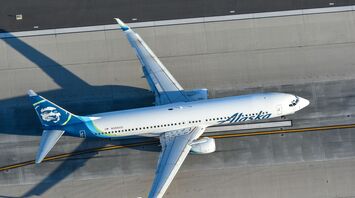Mid-Flight Incident on Alaska Airlines: Passengers Narrowly Avoid Tragedy

In early January 2024, an Alaska Airlines Boeing 737 MAX 9 encountered a critical issue when a section of the fuselage broke off mid-flight, leaving a significant hole in the aircraft’s body. Despite the gravity of the event, the flight team, led by First Officer Emily Wiprud, did not realize the extent of the damage until after the plane had safely landed. This incident has raised important discussions about airline safety measures and operational procedures.
During what was supposed to be a routine flight, First Officer Wiprud was alarmed by a loud noise, which she described as "an ear-popping explosion," followed by a rush of air filling the cabin. Though the sound was unsettling, the crew was unable to immediately detect any external damage. The full scope of the issue only became clear after the aircraft had landed, revealing a major breach in the structure(
In an interview about the event, Wiprud reflected on the tense moments, explaining that she initially feared for the worst when hearing reports of empty seats and potential injuries from the cabin crew. She admitted that there were concerns some passengers might have been ejected from the plane due to the sudden decompression(
Amazingly, all 171 passengers and crew members on board survived the ordeal. However, personal items such as Wiprud’s headset and two passengers' mobile phones were blown out of the plane. One teenager sitting close to the damaged area even had his shirt torn off by the force of the wind, underscoring the severity of the pressure change(
Legal Actions in Response
Following the incident, three passengers initiated a lawsuit against Alaska Airlines and Boeing, seeking damages of $1 billion. The suit alleges that both companies ignored critical warnings about potential mechanical issues, which could have prevented the frightening event. The lawsuit accuses both the airline and the manufacturer of negligence, arguing that the flight should never have been allowed to proceed in such a compromised state(
The Need for Stringent Safety Standards
This near-tragedy serves as a stark reminder of the importance of rigorous safety protocols and detailed inspections in commercial aviation. Although no lives were lost, the incident highlights the dangers of overlooking mechanical issues. For travelers, it’s a compelling reminder to always remain informed about safety protocols and procedures, no matter how rare such incidents may be.
Both Emily Wiprud and the captain were later praised for their calm and professional handling of the emergency, which played a key role in ensuring the safety of everyone on board. Their swift actions were later recognized by aviation authorities as an example of exceptional airmanship under extreme pressure.



















